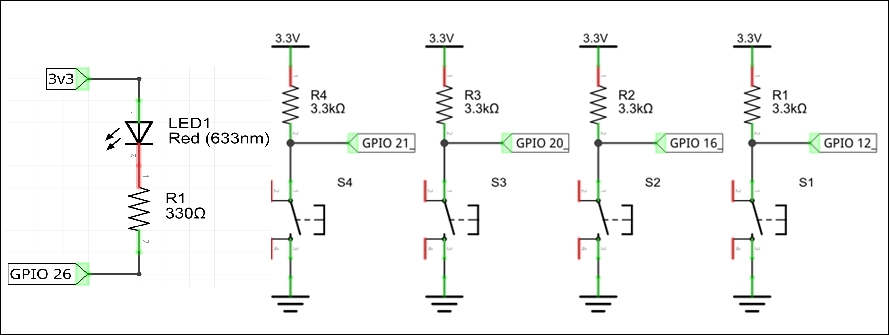Digital input and output (I/O) is at the point where computer programming touches the real world. The Raspberry Pi has a rich I/O structure that includes 3.3 Volts, input and output interface ports, Serial Peripheral Interface (SPI), and Inter-Integrated Circuit (I2C). Using this I/O structure, you will drive LEDs as output indicators and then use the Tkinter interface to sense switches as input.
After completing this chapter, you will be able to:
Understand the Raspberry Pi digital I/O port configuration
Drive LEDs and sense actuation of switches
Add a switch interface to the Internet radio project




